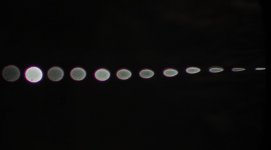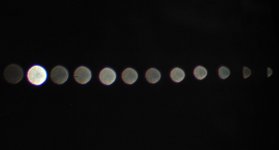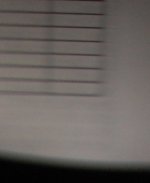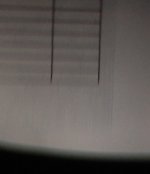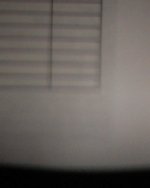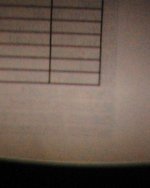I’m not arguing a point just to argue, it’s just as clear as day that I don’t see what some others do, and it’s not for lack of trying or technical ineptitude. It’s as though you are telling me the FL’s are purple when, as I hold them in my hand, I can see they are black.
Here is some differing opinion,
Andy Bright said this, BF review
''I'm not going to bother with the meaningless optical performance of the peripheral edge of view, other than to say that the typical edge distortion isn't much different to any other bino and doesn't have any impact for the real world user.''
And later, added,
‘’Amazing that so few of the people with 'issues' against the FL haven't actually looked through one? Similarly curious that just two people who see a 'problem' have had such a huge impact on the threads against all those who have seen no problem AFTER using the bino.... another odd fact, probably of no relevance, is that of the geographical location of those with a concern.’’
24 Hour Campfire review, [Cornell]
‘’In terms of pure image quality, six models received “perfect scores” from our reviewers, indicating an absolutely flawless, bright, and crisp-from-edge-to-edge image. Of these, the Zeiss 8x42 FL T* scored the highest for overall quality of any binocular tested, combining its exquisite image with perfect eye relief, a relatively wide field of view, and excellent close focus. The similar Zeiss 10x42 was the only 10x model in our test to receive this highest image rating’’
Kimmo Absetz, Alula,‘’Image quality near the edge of field: It is generally easier to make higher magnification binoculars have better edge resolution, and this was also the case with the Zeisses. In our most recent test, the older 10x40 Victory had the best edge quality. The new 10x42 Victory FL is not quite as good, and fell a bit short of the Nikon SE. The sharp area in its image also does not extend as far out from the centre as in the Nikon. The 7x and 8x models are a little better than average for their magnifications. The Swarovski EL 8.5x42 has perhaps marginally better edge performance than the Zeiss 8x, although there were conflicting views about this among our team members. Pincushion distortion, which is almost always very prominent in binoculars, is exceptionally well corrected in the new FLs.’’
Funny, the EL’s seemed about the same at the edge as the FL’s. Why don’t we hear about this obvious defect when discussing the EL? Odd…….
He continued,
‘’Our favourite among the models was the Victory 8x42 FL, which our test team considered to be narrowly but unequivocally better than the number one of recent years, the Swarovski 8.5x42 EL.’’
TLB, Cloudy Nights
I've had a pair of the 7x42 FLs for almost a month. I am exceptionally pleased with them...enough so that I am seriously considering selling my Nikon 8x32 SEs.
The 7x42s do suffer from the edge sharpness issues attributed to the FL line but in practice the field of view is so large that I rarely notice it at all. In fact, the "field of apparent sharpness" (to make up a term) is larger than that of the 8x32 SEs.
What I mean is that, even though the SEs are sharper closer to the edge, the sharp portion of the 7x42s is larger than than that of the SEs even though they don't hold the sharpness as close to the edge. (Did that make any sense?)
Hinmark, Cloudy Nights
‘’the Zeiss 7x42 FL performs better than the Zeiss Classic 7x42 B/GA T* in respect of edge sharpness. You have to do a second look at the edges to detect the softening. In fact I don´t know any other binocular with that wide fov that have an edge sharp as the 7x42 FL. ‘’
AllBino’s.com [very good technical site for binocular reviews] 10 x 42 FL review
Astigmatism Properly corrected. 8.5/10.0
Coma Perfect. Minimal even at the very edge. 9.7/10.0
Blurring at the edge of the FOV The blur appears in the distance of 88% +- 4% from the field of view centre. 7.5/10.0
His complaints about the bin were distortion, not astigmatism or edge sharpness. Maybe we need a new thread to beat on the FL’s for distortion!
This site still ranks the 10 FL #1, with caveats.
So, there is some evidence that the Birdforum view isn’t universal…I’m not blind or delusional and maybe, just maybe, this perceived problem has been blown way out of proportion. I have no problem with those that opine about the FL’s shortcoming’s, but please don’t assume those opinions are universal or that others might have different experiences. From what you see above, there is a hugely divergent POV when it comes to these bins. Considering they have been [widely] considered the best roofs for 7 years now, they just can’t be as bad as some would like us to believe. The use of terms such as ‘’fuzzy edges, halo, distracting blur’’ is [IMO] intentionally derogatory and without merit. This comes from an owner and user, not a bystander.
And ,going back in time, it is very interesting to read about the EL’s [or Leica’s], which seem to have about the same edge performance as the FL’s, only it didn’t seem to matter for the El’s.
Same with the old Victories, best edge sharpness of the expensive roofs but, alas, in this case edge sharpness didn’t matter……….





